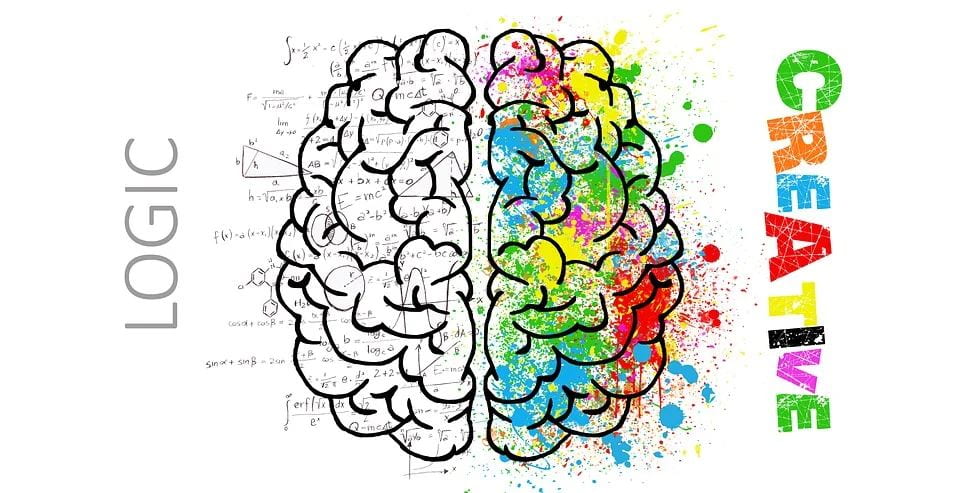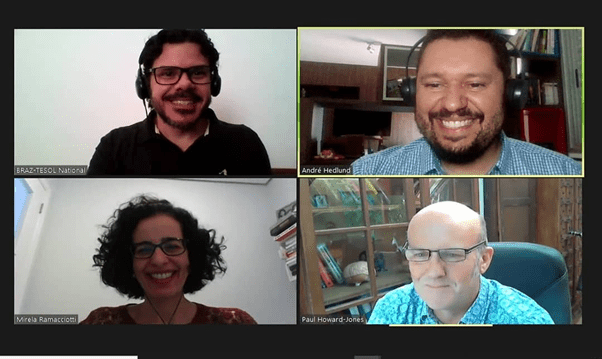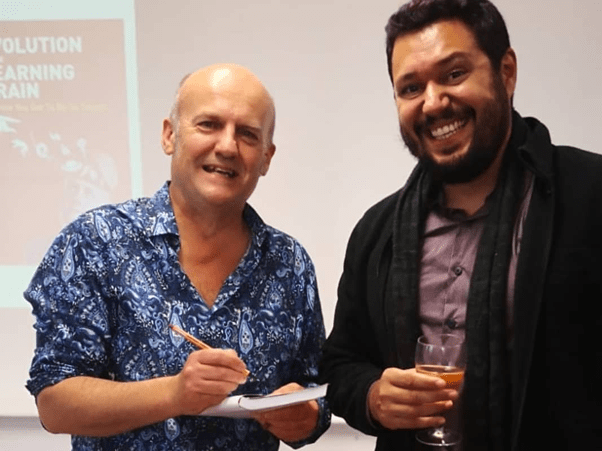
 Blog post by André Hedlund, Chevening Alumnus, MSc in Psychology of Education from the School of Education at the University of Bristol.
Blog post by André Hedlund, Chevening Alumnus, MSc in Psychology of Education from the School of Education at the University of Bristol.
Ever heard anyone say that? The last time I did was from one of the most powerful voices in movie history: Morgan Freeman’s. If he had been born in the UK, I’m sure he would’ve been knighted by now and joined the select group that includes Sir Anthony Hopkins, Sir Ian McKellen, Dame Judi Dench, and Dame Helen Mirren. Mr. Freeman played the role of Professor Samuel Norman, brain expert who has studied, among other things, the evolution of this incredible organ in Lucy, a movie co-starring Scarlet Johansson.
In one of the scenes, Professor Norman is lecturing to a group of interested students and says:
“Imagine for a moment what our life would be like if we could access, let’s say, 20% of our brain capacity?”
He goes on and claims that each human being has 100 billion neurons, from which only 15% are activated and that means that “we possess a gigantic network of information to which we have almost no access”. In his words, if we could access all the potential of our brains, we’d be able to control other people and even matter.
Well, Morgan Freeman, even though I love your voice and your acting, your character couldn’t be further from the truth. In this Luc Besson movie, released in 2014, most of what Professor Samuel Norman says is a false claim about the brain. It’s a neuromyth.
Funnily enough, I met the real Professor Samuel Norman. His name is Paul Howard-Jones and he is one of the biggest brain references in the world and a professor at the School of Education at the University of Bristol. I’m quite privileged to have been one of his students. In his amazing book, Evolution of the Learning Brain: Or How You Got To Be So Smart, Howard-Jones (2018) goes back in time to the early forms of life and takes us on a journey throughout the aeons of our home planet until the most sophisticated form of intelligence known to date: our brains and us. He has published many articles and books on the potential of using brain research, and neuroscience-informed strategies to positively impact educational achievement and learning outcomes.
Paul Howard-Jones signing my copy of his book during the launch in 2018
Well, Prof. Samuel Norman, let’s stick to the facts.
No, we do not use just 10 or 15% of our brain capacities. In fact, we use most of our brain most of the time, even when we are sleeping. A simple task such as drinking coffee will require many areas of your brain to activate synchronously. The frontal lobe when you decide to look at the cup of coffee and pick it up, the occipital lobe because you’re visually processing the stimulus, your temporal lobe as you imagine the word “coffee”, subcortical areas, an integral part of your reward system, because the thought of fresh coffee and that expectation make you feel good, your parietal lobe’s somatosensory cortex as you grab the cup and feel the heat on your fingertips, as well as areas related to taste and smell, memory retrieval, etc. You can learn more about brain structure and function on https://www.brainfacts.org/
No, Samuel Norman, we don’t have 100 billion neurons in our brains. Actually, according to the amazing Brazilian neuroscientist Suzana Herculano-Houzel, we have around 86 billion. You can watch her brilliant TED Talk about how she discovered that (it involved detergent and brain soup). Suzana Herculano-Houzel (2002) was also responsible for a questionnaire that has been replicated all over the world on how much the general public, and most recently, teachers, know about the brain.
The results in Brazil suggested that most people don’t really know much about how the brain works. So did the results in the UK, as demonstrated in Howard-Jones’ article (Dekker et al. 2012), in Portugal (Rato et al. 2013), in Greece (Papadatou-Pastou et al., 2017) in Latin America (Gleichgerrcht et al., 2015), in China (Pei et al., 2015), in Spain (Ferrero et al., 2016), and virtually everywhere.
But there is hope! In Lucy, Scarlet Johansson unlocks her brain potential because of a synthetic drug and basically gains superpowers that would make her fellow Avengers in a different franchise incredibly jealous. Let’s just say that if Natasha Romanoff were Lucy in the latest Avengers movies, Thanos wouldn’t have gone so far at all. The hope I’m referring to, however, is the hope that lies in unlocking our potential as teachers so that we can unlock our students’ learning potential. There are things based on the MBE science that can guide us in understanding how attention, memory, motivation, self-efficacy, and many other relevant pre-requisites or aspects of learning work. We just need to learn about them and start applying that knowledge.
While we are at it, I should probably tell Prof. Samuel Norman that there are other popular neuromyths being spread in educational settings all over the world that could potentially lead teachers to misinformed decisions when they are planning and delivering their lessons. To name a few, I will just point out that the learning styles theory and the left/right-brained paradigm need to be revisited by many teachers out there as the scientific evidence suggests that students do not learn better when taught in their preferred learning style (Dekker et al. 2012)
I actually wrote a 4-blog post series on some neuromyths that might be useful. You can read about the potential classroom implications here. Click here to read about learning styles and fixed intelligence. Here you can access the one about drilling, multitasking, and emotions. And you can find the last one about language acquisition and the right and left-brain dominance here.
On the very first blog post of the series, I remind everyone that:
“It is essential to remember that what I’m proposing is not a recipe for successful teaching, though. There are so many variables to consider that we can’t say “Do this and everyone will learn”. The authors who have written about this say that we need to be careful with such bold claims. Rather, if we look at it as just a framework that may help us think about how we teach and how our students learn, I think the potential is huge.”
The journey is long for those who are interested in following the path. A good place to start this journey into the depths of our brain, besides Paul’s book, is the website http://www.scienceoflearning-ebc.org/. You can find more information on the Engage-Build-Consolidate (EBC) framework (developed by Paul and many collaborators) with principles that will help you reflect on teaching/learning strategies that might have a positive impact on learning outcomes as they are based on how the brain works.
 Paul Howard-Jones’ webinar for the BRAZ-TESOL Mind, Brain, and Education Special Interest Group. Mirela Ramacciotti, Rodolfo Mattiello and I helped organize the event
Paul Howard-Jones’ webinar for the BRAZ-TESOL Mind, Brain, and Education Special Interest Group. Mirela Ramacciotti, Rodolfo Mattiello and I helped organize the event
Here are some questions for you to reflect on. What impact do characters like Prof. Samuel Norman (both in fiction and real life) have on people’s understanding about the brain? What could happen if more educators around the world actually understood some fundamental principles of brain structure and function and used that knowledge to tailor their teaching practice? And finally, what could the potential of knowing about their own brains be for students who might be struggling in the classroom?
I don’t believe in magical solutions as those pushed in sci-fi movies. I do believe in real and effective solutions based on scientific evidence and I think you should too.
References
Dekker, S., Lee, N., Howard-Jones, P., & Jolles, J. (2012). Neuromyths in education: Prevalence and predictors of misconceptions among teachers. Frontiers in Psychology, 3, 429-429. doi:10.3389/fpsyg.2012.00429
Ferrero, M., Garaizar, P., & Vadillo, M. A. (2016). Neuromyths in Education: Prevalence among Spanish Teachers and an Exploration of Cross-Cultural Variation. Frontiers in human neuroscience, 10, 496. doi:10.3389/fnhum.2016.00496
Gleichgerrcht, E., Lira Luttges, B., Salvarezza, F., & Campos, A. (2015). Educational neuromyths among teachers in Latin America. Mind, Brain, and Education, 9(3), 170-178.
Herculano-Houzel, S. (2002). Do you know your brain/ A survey on public neuroscience literacy at the closing of the decade of the brain. The Neuroscientist, 8(2):98-110
Howard-Jones, P. (2018). Evolution of the Learning Brain: Or how you got to be so smart. Taylor & Francis Group
Papadatou-Pastou, M., Haliou, E., & Vlachos, F. (2017). Brain Knowledge and the Prevalence of Neuromyths among Prospective Teachers in Greece. Frontiers in psychology, 8, 804. doi:10.3389/fpsyg.2017.00804
Pei X., Howard-Jones P. A., Zhang S., Liu X., Jin Y. (2015). Teachers’ Understanding about the Brain in East China. Proc. Soc. Behav. Sci. 174, 3681–3688. 10.1016/j.sbspro.2015.01.1091
Rato, J., Abreu, A., & Castro-Caldas, A. (2013). Neuromyths in education: What is fact and what is fiction for Portuguese teachers? Educational Research, 55(4), 441-453.
Tokuhama-Espinosa, T. (2014). Making classrooms better: 50 practical applications of mind, brain, and education science. First Edition. New York: W.W Norton & Company.

